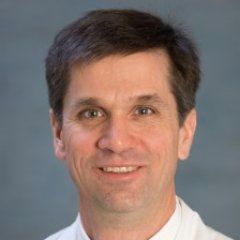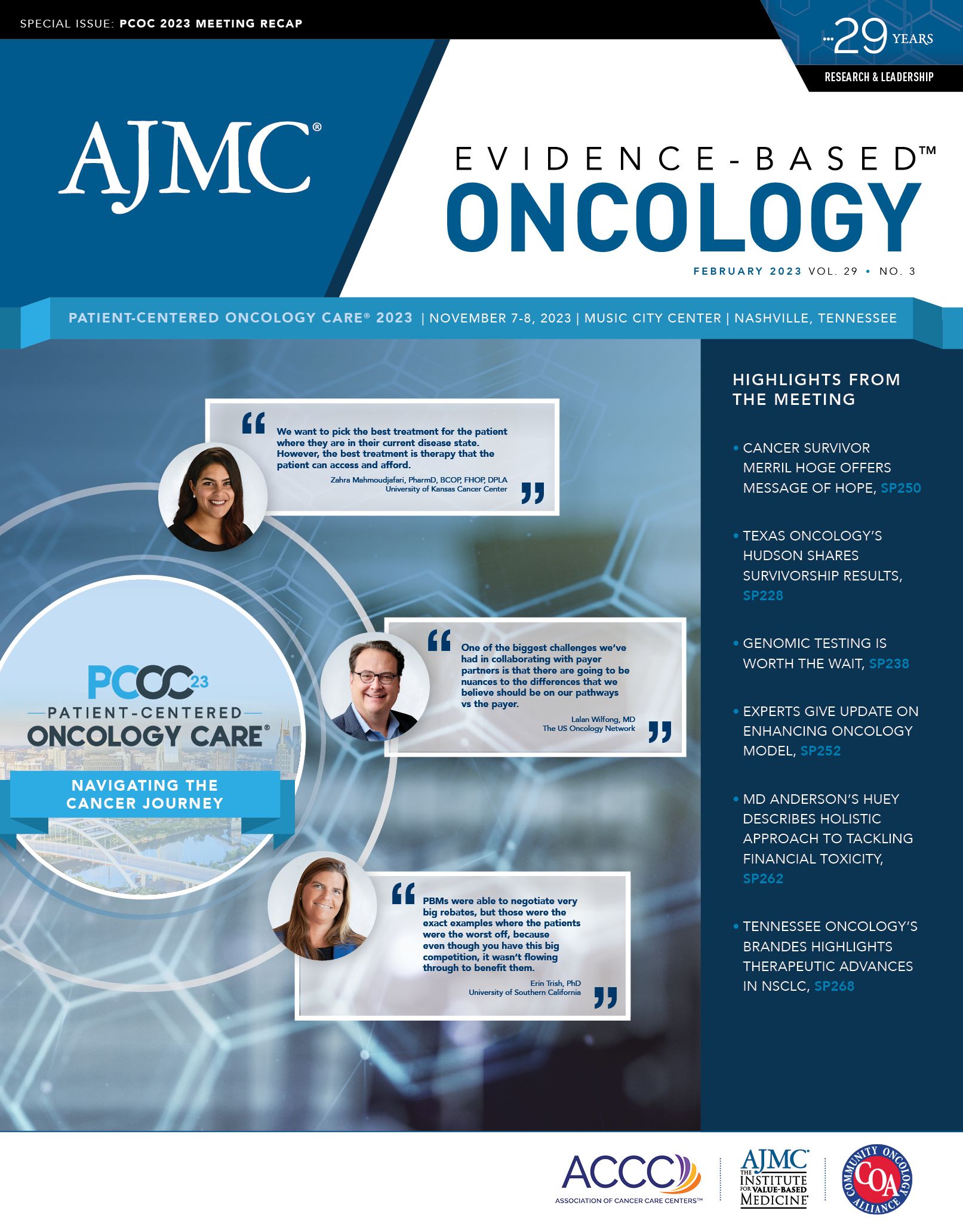Publication
Article
Evidence-Based Oncology
Edward R. Arrowsmith, MD, MPH: Trust and Compromise Are Essential in Building Oncology Clinical Care Pathways
Author(s):
From an interview conducted during Patient-Centered Oncology Care 2023.
Edward R. "Ted" Arrowsmith, MD, MPH | Image: Tennessee Oncology

Collaboration between payers and providers is crucial for developing effective oncology care pathways, and at Tennessee Oncology and OneOncology, physician-led initiatives ensure legitimacy and consensus in decision-making, explained Edward R. “Ted” Arrowsmith, MD, MPH, medical director for pathways at OneOncology and managing partner at Tennessee Oncology.
Arrowsmith moderated the panel discussion, “Can Clinical Pathways Have Burnout, Too?” at Patient-Centered Oncology Care 2023 and spoke with Evidence-Based Oncology about the discussion.
EBO: How can payers and providers work together to develop pathways?
Arrowsmith: I think it’s really critical for payers and providers to try to work together. It’s difficult on both sides, there’s not always 100% trust, and I think particularly on the provider side it’s logistically difficult and not a 3-week process. Often, it’s a several-years process, but working collaboratively is really critical. A huge problem that physicians have with payer-based pathways is that feeling that you’re powerless and don’t have say, and if you can work collaboratively, that can change from frustration to understanding that really makes things work better.
EBO: What is the oncologist’s role in building oncology care pathways at Tennessee Oncology and OneOncology?
Arrowsmith: Our pathways program at Tennessee Oncology and OneOncology is completely physician led, so it’s using disease-based experts from across OneOncology to get together, review the latest data, and make changes to the pathways as appropriate. We have a support team of pharmacists who work with us as well, but it’s really the individual physicians working together who come to the final decisions about the pathways. I always think it’s super important to have that strong sense of legitimacy of the pathways that people feel “these are my pathways” rather than “these are decisions foisted upon me from some unknown people.”
EBO: How do practices find the compromise between developing consistent pathways and prioritizing specific practice needs?
Arrowsmith: Increasingly thinking about the issues of where pathways specifically fit in, for a long time we’ve talked about guidelines like the [National Comprehensive Cancer Network] guidelines, and then pathways almost as a more specific subset of that. Pathways for us are 100% clinically driven, but increasingly, an individual practice or even an individual practice and an individual payer might have some agreement in those situations when there’s clinical equipoise. There are 2 treatments that either have been studied in a head-to-head fashion and found to be similar or, more frequently, when you have 2 drugs of the same class, say, 2 immune checkpoint inhibitors that have both been studied with chemotherapy, found to be superior to chemotherapy, and those studies look pretty similar. So the physician feels either one of those drugs is probably about the same, that maybe there might be a decision to use one or the other, perhaps in a value-based way, with a payer. In those settings, we don’t really change the pathways, per se, but we’re working on a variety of prompts to let that physician know at the point of care that really there’s one of those that might be preferred in this particular patient at this particular time.
EBO: What are some key challenges with clinical pathways at Tennessee Oncology?
Arrowsmith: There are always a couple challenges with pathways. One is having them actionable at the point of care, both having them built into the [electronic medical record] and then even how do you get [pathways] kind of in the head of the oncologist when he or she is making decisions or thinking through what’s next for treatment. It’s always hard, whether it’s a pathway or a clinical trial, if you’ve already talked to the patient and told them a plan, to change that plan based on a pathway or to bring up a clinical trial late. Having a kind of thorough plan of both from the beginning is really important. So we’re working on a variety of technical approaches to really try to help that clinician at the point of care.
The other big struggle is just updating the past pathways. We’re so fortunate that we live in this age of discovery where cancer care is improving, but it actually then becomes kind of a big administrative and intellectual problem to think through each FDA approval, every paper presented at [the annual meetings of the American Society of Clinical Oncology or the European Society of Medical Oncology], and think about [whether] we need to update the pathways for this. And that involves often reading those studies really carefully, because in an age of targeted therapies, understanding exactly who are the right patients for this new approach isn’t always straightforward.
EBO: How do Tennessee Oncology and OneOncology go about updating their clinical pathways in a timely manner?
Arrowsmith: In terms of our pathways, we have regular quarterly meetings where we look to update the pathways, but [we] also have a more kind of ad hoc process for data that emerges—usually FDA approvals, new publications, or presentations at major conferences. [For] those, we rely both on members of the disease groups and the OneOncology and Tennessee Oncology pharmacy staffs to help us find those exciting new updates. And then, depending on the sort of controversy around that, [we’ll] either call an unscheduled meeting or occasionally just use a group email to update the pathways in real time.
The other thing we’re working for as more and more trials are targeting specific populations at the time we’re rolling out those pathway updates is including sort of a plan for identifying patients. A good example of that was with the original data for KRAS G12C mutations, first in lung cancer and then more recently in colon cancer, is using our database of mutations to identify patients to where that might be an appropriate therapy.
EBO: Does it seem like clinical pathways are evolving into something different or a next generation of pathways?
Arrowsmith: We talked about how pathways in some ways were designed for an earlier era when we were choosing among 2 or 3 different cytotoxic chemotherapies for big disease groups, like all of non–small cell lung cancer or adjuvant therapy for all of breast cancer. As we’ve moved toward a more targeted world, I think just having a PDF is not enough. What we need to do is have the disease group leaders who form the pathways also work with the clinical team, the technology team, physician education, staff education, kind of every approach to help guide us towards what’s the best therapy for this patient sitting in front of us today. There’s so much going on that [for] a busy clinician on a Tuesday afternoon, we need help to let that physician know about a trial that was just presented in Europe 10 days ago.






